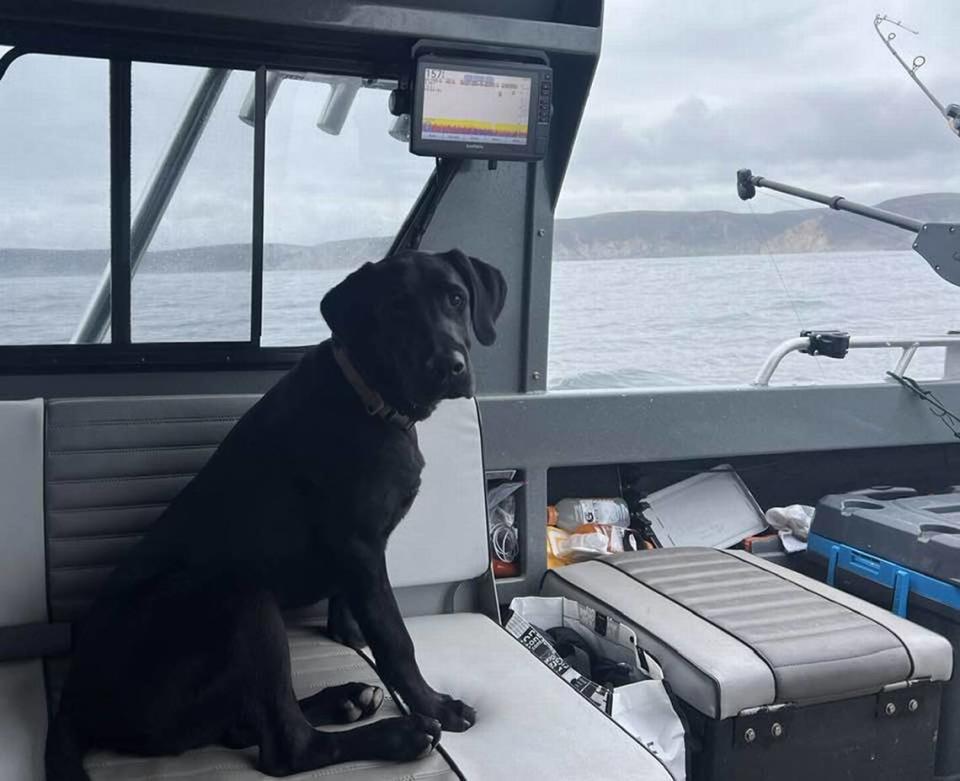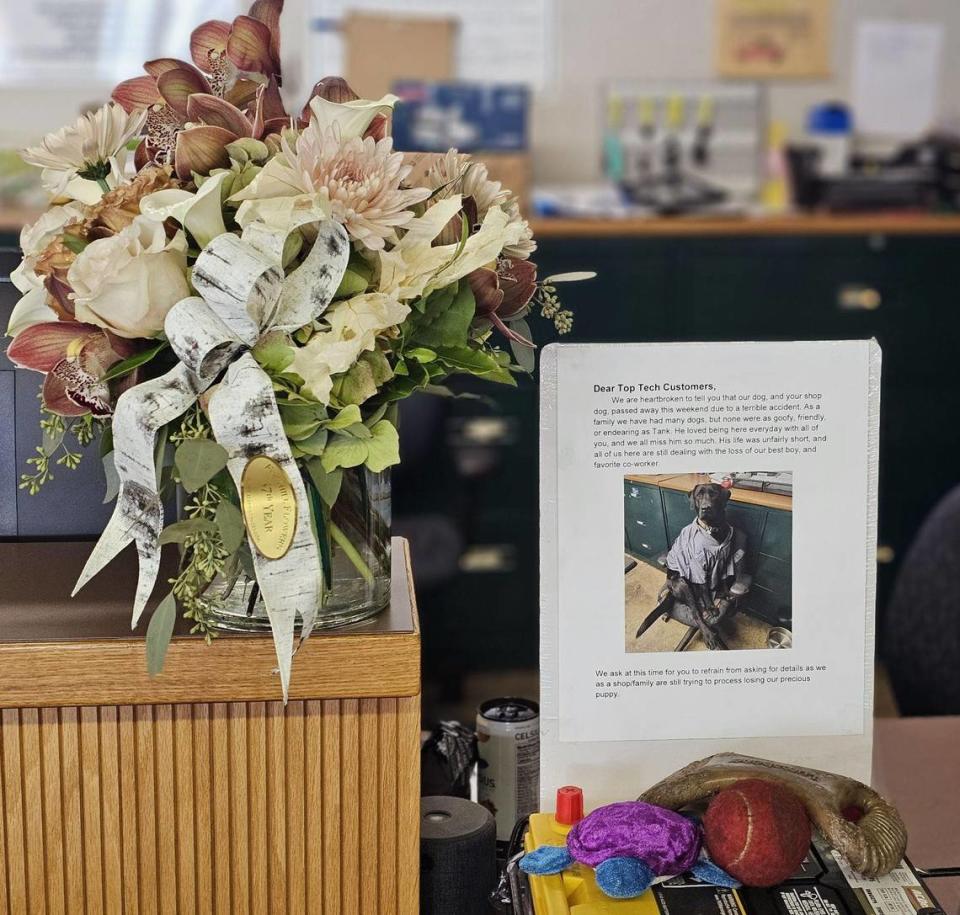California man’s dog suffocated in pet food bag, he says. How can owners take action?
Dennis Maro left his 2-year-old dog Tank home alone for just about two hours. That wasn’t abnormal. He was always able to trust the black Labrador retriever, even with temptation near.
Out on a fishing trip in late October, the Grass Valley resident was heartbroken when he received a call from his daughter saying Tank had suffocated, presumably trying to get the last few bits of kibble out of a cat food bag.

“(My wife and I) had enough trust in him that he wasn’t going to get into anything,” Maro said in a phone interview last week. “He would usually just wait for somebody to come home.”
“I never thought that suffocating from a cat food bag would be the cause of his death,” Maro said.
Though Maro said he had fed Tank before leaving, he thought the dog must have been bored.
“The way that the bag is designed is like a trap. It’s so long and it has velcro,” Maro said. “Simple changes to the bag would fix this problem.” There were no warning labels on the bag, he said.
When he called the pet food company — which did not respond to multiple calls and emails for comment on this story — he said a representative expressed their condolences before hanging up.

Tank’s death left Maro searching for some way to act — to warn others about the danger of asphyxiation for beloved pets.
“I just don’t want anyone else to suffer what I’m going through,” Maro said.
Maro contacted The Sacramento Bee’s service journalism team, which focuses on helping our readers navigate life in the region, asking for help.
For owners hoping to take action against potentially dangerous products for pets, here’s what you can do:
How to report an unsafe pet product in California
No federal regulations
The U.S. Consumer Product Safety Commission, an independent federal regulatory agency, works to ensure the safety of consumer products — their focus, though, is humans. Judy Echavez, a spokesperson for the CPSC, said pet products do not fall under their jurisdiction.
The U.S. Food and Drug Administration, an agency which regulates both human and pet food, is responsible for the ingredients in the food and packaging, the website states.
Non-profits that will help
While neither the FDA nor the CPSC are responsible for labeling suffocation hazards, some non-profit organizations have stepped in to fill the gap and assist pet owners with pet product safety.
Center for Pet Safety, a non-profit research and advocacy organization based in Virginia, works to author safety standards for pet products.
Lindsey Wolko, the founder and CEO of Center for Pet Safety, launched a certification program to counsel pet product manufacturers around the globe to better the safety for both the consumer and their animal companion.
The certification program studies pet products and certifies which ones are the safest available.
For pet product-related injuries or deaths, Wolko said pet owners should contact the Center for Pet Safety.
“We typically interview the pet owner about the incident,” Wolko wrote in an email to The Bee. “In some instances, we create educational video content to help educate pet owners.”
For food packaging-related reports, pet owners can contact Prevent Pet Suffocation, a non-profit organization focused on the suffocation dangers pets face from chip bags and other food packaging.
Bonnie Harlan, the founder of Prevent Pet Suffocation, said any pet owner who loses a pet to suffocation can contact the organization and notify the manufacturer of the bag.
“When a pet owner contacts me, I respond as soon as possible,” Harlan wrote in an email to The Bee. “I encourage them to share their story to help spread awareness since it is our best defense against pet suffocation.”
Harlan said most companies do take a report about an incident when it occurs. However, she said there are currently no regulations for manufacturers to change a packaging design after a pet has suffocated.
“The FDA has a Safety Reporting Portal which some pet owners have filed a report, but the FDA does not regulate the food bags,” Harlan said.
“Pet suffocation happens daily and within minutes,” Harlan said. “Pets suffocate in chip bags, snack bags, pet food bags, cereal bags, plastic bags, containers, etc.”
When a pet puts their head inside a food bag, Harlan said the bag, typically made from a strong mylar-like material, can create a seal around their neck causing the bag to tighten and cut off the pet’s oxygen.
The organization currently has efforts to require chip bags to add suffocation warning labels.
“I have focused on chip bags because they are the biggest culprit for pet suffocation,” Harlan wrote. “In data from our recent survey on pet suffocation, chip bags were responsible for 47% of the suffocation events and pet food bags were 13%.”
Preventative measures for pet safety
According to the Prevent Pet Suffocation website, any pet can be vulnerable to suffocation.
Here are some home safety measures the organization recommends:
Keep all food bags stored away.
Tear or cut up bags after use.
Put lids back on containers when tossing them out.
Store food in plastic containers.
Keep all trash cans locked or tightly fastened
Do not let pets roam freely in the house without supervision.
Learn CPR for pets.
What do you want to know about life in Sacramento? Ask our service journalism team your top-of-mind questions in the module below or email servicejournalists@sacbee.com.

